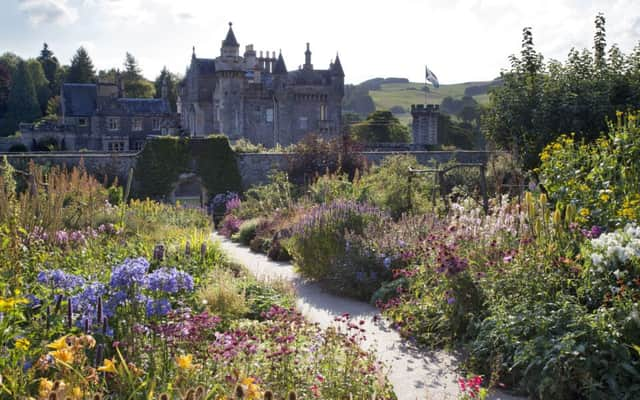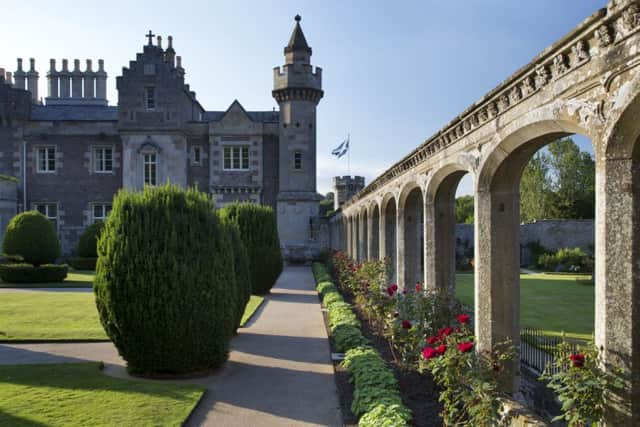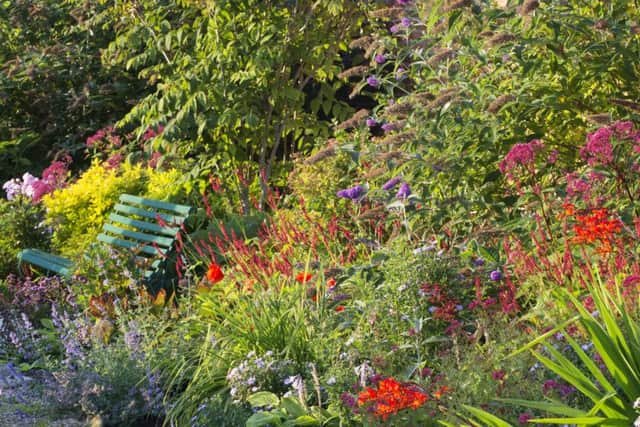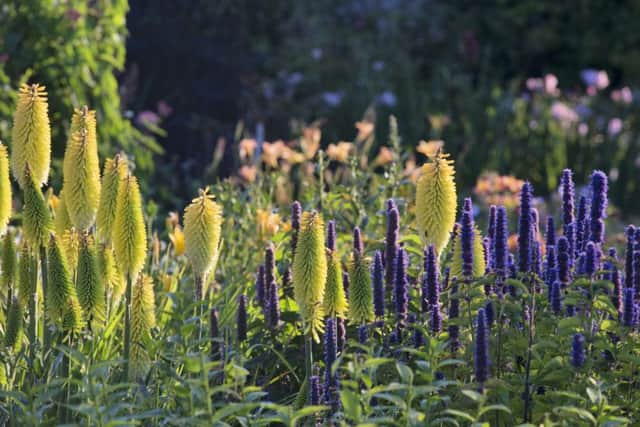Sir Walter Scott’s Abbotsford garden still blooming


ABBOTSFORD, the Scottish Baronial mansion built by Sir Walter Scott between 1819 and 1825, sits in a raised position overlooking the River Tweed between Selkirk and Melrose. The romantic setting, complemented by mature trees, is made all the more interesting when you learn that Scott had a great passion for landscaping and was involved in the choosing and planting of nearly every tree on the estate. He also planned the gardens: laying out the formal South Court separated by a cloister from the sunken Morris garden and the south-facing kitchen garden with views over Gala Hill.
It was Scott’s involvement with the garden that has captivated Pippa Coles, garden development manager, for the past 18 months. “The gardens were an integral part of Scott’s vision for the house,” she says. “He was involved with everything. There are many references to the garden in his letters and journals.”
Advertisement
Hide AdAdvertisement
Hide AdLeading the way along the kitchen garden’s top border she explains: “Scott described a garden that combined ornamental plants and vegetables. The vegetables were screened by ornamental plants.” This theme, continued until the last of Scott’s descendants, Dame Jean Maxwell Scott, lived at Abbotsford, is clearly manifest in the magnificent double borders that flank the vertical path that runs up the sloping space towards the conservatory. Here, in autumn, the main players are purple asters, dusty pink eupatorium and deep red persicaria.


She also suspects Scott was involved in the symmetrical layout of four rectangles with generous perimeter borders and box-edged paths. The space features two rotating quadrants of annual vegetables, and one quadrant of soft fruit and asparagus. The vegetables are made all the more attractive by the companion planting of bee-loving annuals such as royal blue scabious, clouds of Ammi majus, orange calandula and pink cosmos.
Pippa explains: “This year we direct sowed using a list of seeds found on an original receipt in the archives.” The seeds were sourced using heritage varieties, and Pippa admits the beetroot “looked like carrots, long and thin”. The fourth quadrant is laid down to grass, and some of the perimeter borders are used as stock beds and for plant propagation. The budget is tight and reusing existing plants is key.
“The garden has great structure,” she says, adding that she suspects the rustic trellis that brings height to the scheme remains similar to the original. Structure also comes from the espaliered apples that back the horizontal path where Pippa has recently introduced some new heritage varieties: “‘Bloody Ploughman’, for the beauty of its red apples, which we use to punctuate the corners, and locally bred ‘White Melrose’”.
Explaining that she wants the kitchen garden to “shine like a jewel”, she is slowly adding new plants. The lower bed is newly planted with meconopsis and a bed of shrub rose Rosa ‘Brother Cadfael’ was chosen for its fragrant pink flowers and for the reddish tones of its stems; warm tones reflected in the red brick walls. Foliage plants such as Rodgersia pinnata also form an important part of the scheme.


The Italianate arch at the foot of the slope leads down a flight of stone steps to the Morris garden, named for Morris, the exciseman from Scott’s novel, Rob Roy. Research suggests this sunken, rectangular lawn was once planted. Here Pippa visualises rambling roses to soften the tall grey walls and reusing the old Apple Store in Flag Tower where seeds were once stored.
There is a distinct ecclesiastical feel in the cloister walls that veil the Morris garden from the South Court, sited directly in front of the house. Here, the 20th-century plantings of yew topiary reflect the family’s changing tastes; Scott’s hand is evident in the Stone Gallery, a curious display of sculptured plaques set in a curtain of ivy on the south-facing wall. Scott’s love of stonework is also evident in the circular fountain, although it was later moved to its present site close to the house. The third, semi-formal courtyard sits slightly further east: it too is an illustration of the 19th-century fashion for linking the inside of the house to the outside. In autumn the entire site is linked by the tapestry of richly coloured beech, oak and birch that rise up the hill above the garden. A deep red copper beech stands out.
Although there is plenty of evidence to confirm that the land below the house was originally enclosed by many trees, the current view from the terraces over the River Tweed is impressive. Cattle and horses graze under the semi-circle of hardwoods. “In Scott’s day the only access to the front of the house was via the little Gothic stairway from the Morris garden,” Pippa says, adding that the terraces were introduced by Scott’s granddaughter, Charlotte, and her husband, John Hope Scott.
Advertisement
Hide AdAdvertisement
Hide AdThroughout the garden, stonework is embellished with faces. Some, such as the one of head forester, Tom Purdie, whom Scott referred to as his “one and only true friend” have been identified. The tiny bison perched on the arch leading into the kitchen garden was a gift from the American writer Washington Irving, author of Rip Van Winkle. It stands as a reminder of the breadth of Scott’s friendships.


Current areas of research include the input of Scott’s head gardener, French-born William Bougie, formerly at Dalkeith Palace. “Lady Scott was French,” Pippa confirms, “I wonder if there was a link there?
“Scott’s interest in the garden is what makes it unique. He was an artist and Abbotsford was part of his project.”
• The Abbotsford Trust, Abbotsford, Melrose, Roxburghshire TD6 9BQ (01896 752 043, www.scottsabbotsford.co.uk)
The Borders railway, running between Edinburgh, Waverley and Tweedbank, has made the garden much more accessible. Visit the website for information on bus links and the mile-long walking route from Tweedbank. Dogs on leads welcome in the garden.